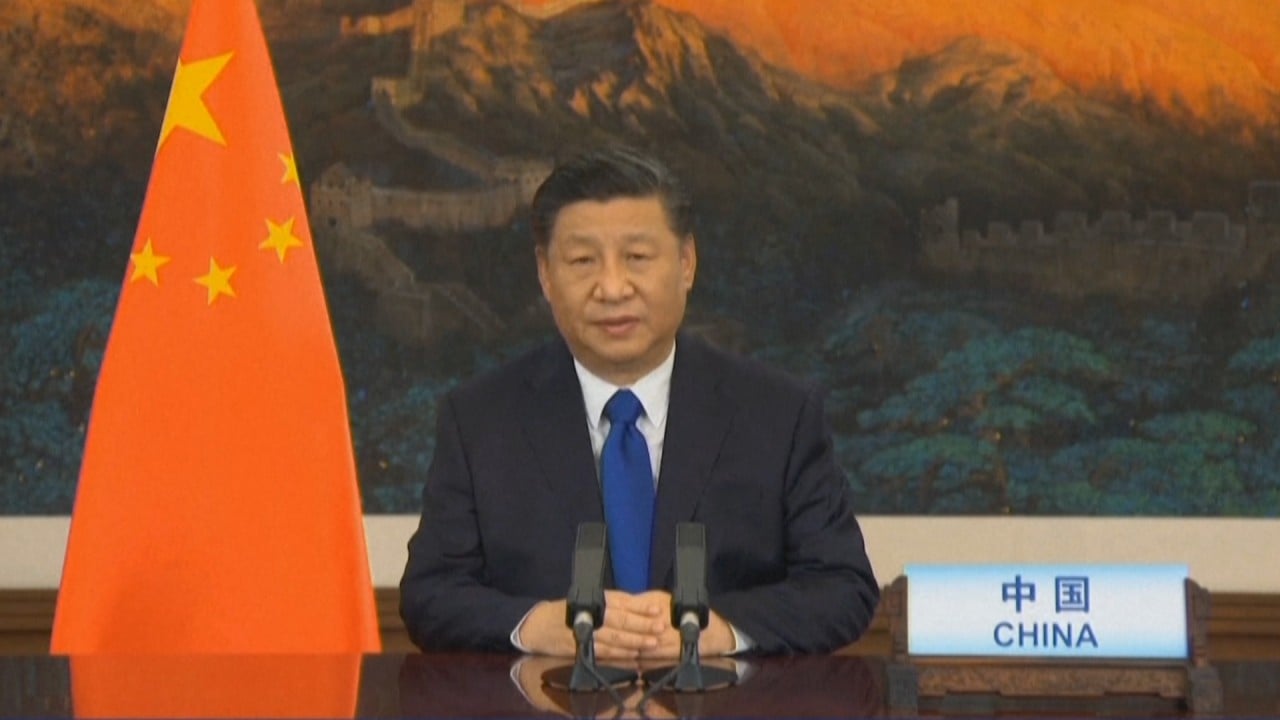
China’s ‘modest’ climate targets for next five years don’t go far enough, experts say
- Beijing sets goal of reducing energy intensity by 13.5 per cent and carbon emissions by 18 per cent from 2020 levels
- But environmental experts say they should be more ambitious, with provinces and industries encouraged to reach peak emissions earlier
China has announced five-year targets towards achieving its carbon neutrality and environment protection goals, but critics say they do not go far enough.
He said Beijing also aimed to eliminate toxic air and urban water pollution in the next five years.
It has set a target of increasing the share of non-fossil fuels in primary energy consumption to 20 per cent by 2025, from 15.3 per cent in 2020. Li also said the nuclear power sector would be developed in a “proactive and orderly” manner.
He said energy intensity would be cut by about 3 per cent this year and an action plan would be drawn up to detail how the country could achieve its goal of hitting peak emissions by 2030.
They were particularly concerned about two key targets: reducing carbon emissions by 18 per cent is the same as it was for the last five-year plan; and the energy intensity goal at 13.5 per cent is actually lower than last year’s 15 per cent.

“This is modest considering that China needs to speed up its action on climate to deliver carbon neutrality,” said Li Shuo, senior global policy adviser for Greenpeace East Asia, adding that the country had to do more than just maintain its previous pace of decarbonisation.
“Given China’s habit of under-committing and over-delivering in its five-year plans, these targets will hopefully hedge against a surge in further emissions growth,” he said. “But to tackle the climate crisis, China needs to bring its emissions growth to a much slower pace – and to flatten the emissions curve early in the next five years.”
The draft five-year plan for economic and social development to 2025 is being reviewed by the National People’s Congress, though its targets are not expected to change and it will be formally approved at the end of the annual legislative session on Thursday.

01:24
China to reduce carbon emissions by over 65 per cent, Xi Jinping says
On the energy intensity target, Yang Fuqiang, a senior adviser in Beijing to US environmental group the Natural Resources Defence Council, said it had been lowered because the government wanted to stimulate the economy after the coronavirus pandemic.
China produced more steel, cement and aluminium in 2020, after largely bringing the pandemic under control, than it did in 2019. It also built 75 per cent of the world’s new coal power plants last year.
“But we should be improving rather than lowering the standard on energy intensity as China’s economy grows,” Yang said.
He added that Beijing had overachieved on its energy intensity targets in the previous five-year plans. In the last one, to 2020, the country reduced its energy intensity by about 18 per cent, 3 per cent higher than the target.
Five-year plan is key to reaching Xi’s environmental and carbon neutrality goals
Ma Jun, director of the Beijing-based Institute of Public and Environmental Affairs, agreed that the targets should be set higher and provinces and industries should be encouraged to reach peak emissions earlier. He said most provinces should be aiming for peak emissions by 2025 and China should set an absolute carbon emissions target in the following five-year plans.
“If we have a cap on carbon emissions aside from the energy intensity target, it will do more to encourage companies and provinces to decarbonise,” he said.
A cap on total energy consumption is expected to be announced in the second half of 2021.
“Right now we need to break down the 2060 target into phases and distribute them into regions and companies,” Ma said. “The 14th five-year plan is an important step in breaking down these targets.”

